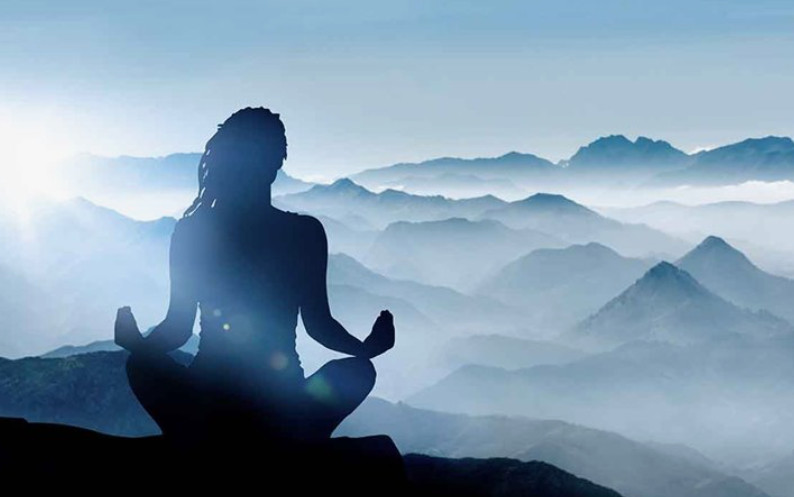Meditation for Beginners: A Comprehensive Guide
In today’s world of chaos and personal stress, we all need to relax and inject peace into ourselves. Meditation provides us with this peace and good feeling.
Meditation has been practiced for thousands of years in different cultures and almost all religions use it. Meditation was once often used for religious purposes. It is now believed and practiced by many regardless of their religious or spiritual beliefs. Today, meditation is used as a psychotherapeutic tool.
What is meditation?
Mediation, introspection, or introspection is the practice of working with the mind. When a person practices meditation, they use a method such as mindfulness or mindfulness on a particular subject, thought, or activity to cultivate attention and awareness and achieve a calm, stable state of mind. Through meditation, you can strengthen your conscious mind and increase your awareness so that you can use it to understand yourself, better control your mind and body, and access higher intelligence. Ultimately, this leads to personal growth, relaxation, enhanced quality of life, and interaction with the environment.
Meditation is easier than you might think. You can meditate from anywhere, at any time, and in any position. Meditation is essentially awareness. Being aware means being aware of your thoughts, feelings, and dreams. You are aware that you are reading this article and are aware of your work. To meditate, we need to stop our thoughts and turn off the sound of our minds, which is very difficult for most people. However, in principle, it is not necessary to control thoughts and create a special focus. In fact, most of us make this mistake when meditating. When we start meditating, our minds are filled with different thoughts. With time and meditation, the sound of our thoughts decreases. However, one day, this sound hindered our meditation. You are perfectly normal to hear these sounds, and reflection was made for you! Breathing is one of the most basic meditation techniques. You can be aware of your breathing as long as you breathe. It does not matter where you are or what time it is. Meditation does not require a particular place or time. It can be as simple as paying attention to your breathing. This is a quick and effective meditation.

How to meditate?
In meditation, we need to be able to use our thoughts and feelings, and we cannot block them. Listening to your “mind monkey” or ignoring it is what matters in meditation. The mind monkey wanders, jumping from branch to branch, confusing the mind. When we have to deal with the monkey of reason who sometimes becomes our boss, we do not need to follow his directions, obey him or go to war with him. We can reconcile with the monkey of our mind by meditating. Giving monkeys to this monkey in negotiations is not the right thing to do. The right thing to do is to send it for something.
But how can a monkey be forced to do something?
By leaving the task to the mind’s monkey, you create a win-win situation in which both parties are happy. You will be satisfied with the presidency if you have a monkey at work. Here you are the employer and the ape of the working mind; you get rid of it. Never forget the law of slowness and continuity. First, you have to give the monkey small, short-term tasks. For example, awareness of breathing is one of the simplest methods of meditation. After the monkey, pay attention to your breathing. Monkey Mind will appreciate your offer. There will be many thoughts running through your head during this time. They do not matter until you lose control of your breathing. It isn’t even necessary to concentrate a lot to do this; you can pay attention to one or two inhalations and exhalations. Anyone can practice meditation anywhere at any time.
Types of meditation
There are many different ways to meditate, and many of them have much in common. In case you are curious about meditation but not sure where to start, familiarize yourself with its basic principles and try different types of meditation to find what works best for you. Some types of meditation include:
Meditation involves being fully aware of your thoughts, being present in the moment, and not reacting to what’s happening around you.
TIM (Transcendental Meditation): During meditation, a person repeats a word or sound called a mantra to relax and concentrate.
A mantra is a repetitive word, thought, or phrase used to avoid distraction and to focus on the mantra. “Um,” which has no special meaning, is one of the most famous mantras. There are some who believe that this sound originates from the big bang at the beginning of creation and the beginning of worldly life and somehow summons the ruling power of this world.
A guided meditation involves creating mental images or relaxing situations, or using a teacher or listening to podcasts or audio files.
Learn more about Vipassana Meditation. Vipassana means seeing the truth.
Meditation of love and kindness is a meditation that brings good wishes to others.
Chakra Meditation: A set of relaxation techniques that promotes balance and wellness in the chakras (seven centers of energy and spiritual strength in the body).
In yoga meditation, controlled postures and breathing exercises increase flexibility and mental clarity.
The most important thing to remember in meditation is that you should not be sensitive to different methods or details. All forms of meditation will eventually lead to awareness and a good mood.
How to do meditation
Meditation may seem confusing or frustrating to those who haven’t experienced it. If you know the basics of meditation, you can easily practice it. To clarify, try this simple exercise:
Raise your left hand and pause. Pay attention to how you feel. Are you feeling hot or cold? Are your hands hurting? Do you have a special sensation?
Lower your hand. Are you comfortable?
Consciousness includes all emotions, such as pain, relief, heat, and cold, as well as being without any emotions. When you meditate, you must communicate with your consciousness. It does not matter whether the awareness of feelings and thoughts is positive or negative. Performing the simple exercise above is also a form of meditation that brings your attention to your body and emotions for a moment.
Let’s look at one of the official methods of meditation. Let’s assume that you want to practice it normally and reap the benefits of it. It is therefore a good idea to know and follow the principles of meditation.
Find a quiet place or a place you like to meditate. It’s best to set aside this place for meditation. If that isn’t possible, any quiet place will do. While meditating, wear comfortable and clean clothes so that you do not focus on them.
Meditation is performed in the lotus position, in which each foot is placed on the opposite thigh. Meditation is performed in the lotus position, in which each foot is placed on the opposite thigh. Asana lotus is a form of meditation, in which each foot is placed on the opposing thigh. It is an ancient yoga asana. Let’s say you can’t sit in the full lotus position. As a general rule, any type of sitting that does not distract you is appropriate. It is necessary to be more discriminating with the help you provide to others.
You can choose from several forms of meditation. Sticking the thumb and pointing at each other is the most common mudra, which boosts mental function and concentration and prevents anger, sadness, and grief.
Close your eyes slowly, as if you were going to sleep. Avoid pressing on your eyelids.
Meditation allows you to be aware of yourself, live in the moment, and understand emotions.
The next step is to relax your body. Begin by relaxing your facial muscles. Relax your neck and shoulders, and release any tension you feel in your body. Let go of your lower limb after settling. Maintain a straight spine. Bring the neck forward so that the weight of the head falls on it. Let your limbs relax one after another and let the tension go.
Listen to your feelings and thoughts while your body is at rest and aware of them with your aware mind. Feel free to express yourself. Don’t filter them. Negative emotions are as important as positive ones. Consider this for a moment.
You can now expand your consciousness outside of your body. Listen to the sounds around you for a few moments.
Then expand your awareness. Feel the space around and above you. Everything that happens around us happens in this space, changes it, and finally returns to it. In the same way that clouds form in an area, they remain in it and then disappear in the same state.
Go beyond the clouds and be aware of the infinite space all around you.
Lastly, open your eyes gently. Take a deep breath and let your mind rest for a few moments.
When you want to meditate without an introduction, follow these steps:
Get comfortable on the floor or in a chair. Make sure your spine is straight.
Close your eyes.
Breathe naturally and do not try to control it. Oxygen is inhaled through the nose, and exhaled through the mouth with each breath.
Consider your breathing and the movement of your body as you inhale and exhale. Observe chest, shoulders, and abdomen movements without interfering or controlling breathing. While you wait, do not fight the thoughts that come to your mind. Instead, return your attention to your breathing if you lose focus.
It is recommended to use audio files in which you will be guided step by step through the meditation process. It is best to start your meditation practice with 2 to 5 minutes for best results and habit and to increase it over time.
When you finish your meditation, you should feel light and relaxed. But if this does not happen to you in the first sessions, do not rush and do not judge. Instead, divert your thinking to good things in life.

Benefits of Meditation
Meditation is the process of training the mind to focus and change the direction of its thoughts. More people are becoming aware of the benefits of meditation, making it even more popular. There have been numerous studies done to prove and find the benefits of meditation, and the results have shown the following:
Reducing stress: Mental and physical stress increases the production of the stress hormone cortisol. The hormone cortisol causes destructive effects, such as the release of inflammatory chemicals called cytokines. Sleep disturbances, anxiety, high blood pressure, fatigue, and dizziness can be caused by these effects. In an 8-week study, mindfulness meditation was able to reduce the inflammatory response to stress.
Meditation reduces stress, which in turn reduces anxiety. Meditation might reduce anxiety, according to a meta-analysis of about 1,300 adults. Meditation is more effective when people have a high level of fear. In a study, mindfulness meditation helped reduce anxiety symptoms in people with generalized anxiety disorder, and increased their response to stress and ability to cope with anxiety. Another study of 47 people with chronic pain found that completing an 8-week meditation program significantly reduced depression, anxiety, and pain.
In addition, some research suggests that mindfulness and meditation exercises may reduce anxiety. Yoga is one such exercise. The combination of meditation exercises and physical activity in yoga may help reduce stress.
You perceive pain based on your mental state. In stressful situations, pain may be more intense. Research shows that using meditation in your daily routine can reduce pain. According to a review of 38 studies in this field, mindfulness meditation can reduce chronic pain, improve quality of life, and reduce depressive symptoms. Meditators experience less pain than nonmeditators.
Reduce blood pressure: High blood pressure causes the heart to work harder to pump blood, resulting in poor performance. Mediation lowers blood pressure, according to a meta-analysis of 12 studies involving about 1,000 participants. Before the survey, meditation was more effective for older volunteers and those with higher blood pressure.
By calming the nerve signals that coordinate heart function, the tension in blood vessels, and the reaction or escape in stressful situations, meditation seems to lower blood pressure.
Meditation can increase positive feelings and actions towards ourselves and others. The act of metameditating or loving oneself creates feelings of compassion towards oneself. With these exercises, people learn to spread kindness and forgiveness beyond themselves to their friends, acquaintances, and enemies.
Meditation is similar to lifting weights for engagement and increases strength and endurance. According to one study, people who listened to meditation podcasts while working were more attentive. A similar study found that people who meditated performed better in visual tasks and received more attention than those who did not. Even short sessions of meditation can be beneficial. Meditation for 13 minutes a day for eight weeks increased attention and memory, according to one study.
Furthermore, meditation helps reduce depression, improve sleep by increasing serotonin (melatonin precursor) and melatonin (sleep hormone), lower heart rate, and more. Meditation is also reported to have helped people eliminate destructive thoughts, including suicide.










